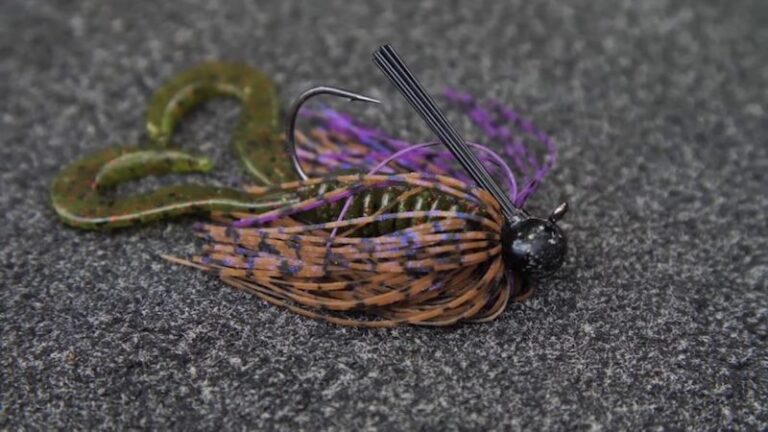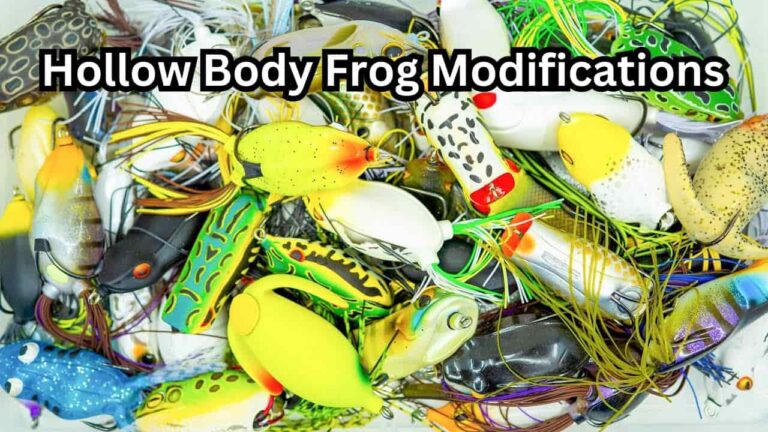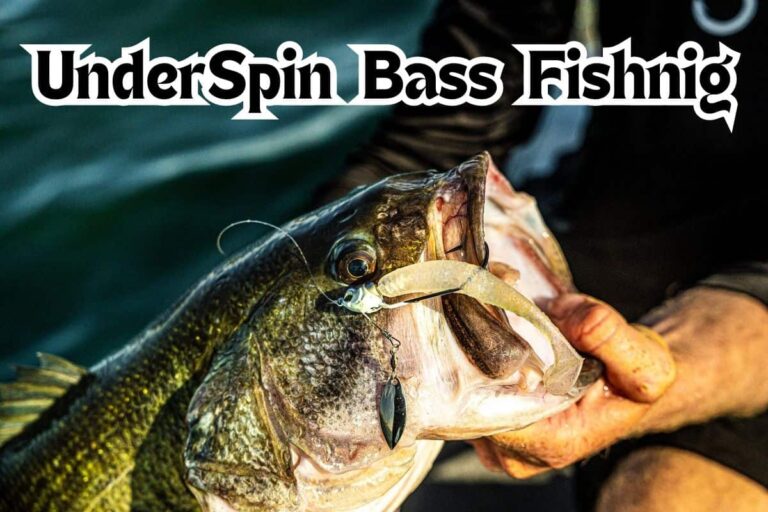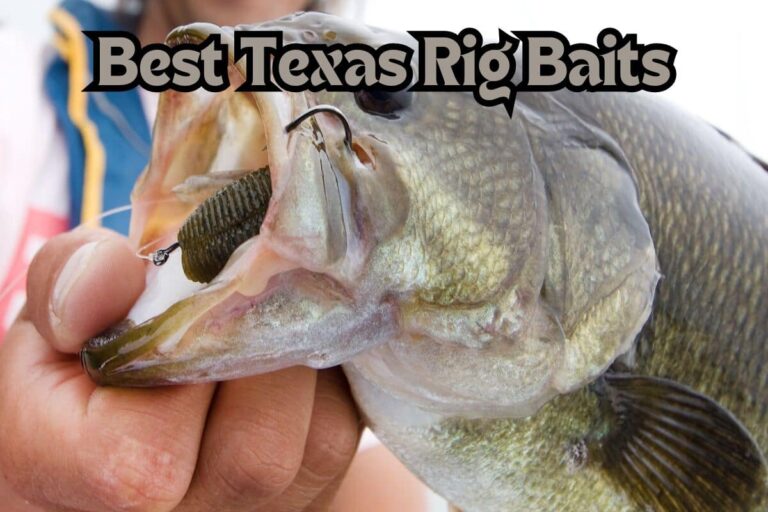When to Use Black and Blue Lures? Everything You Need to Know
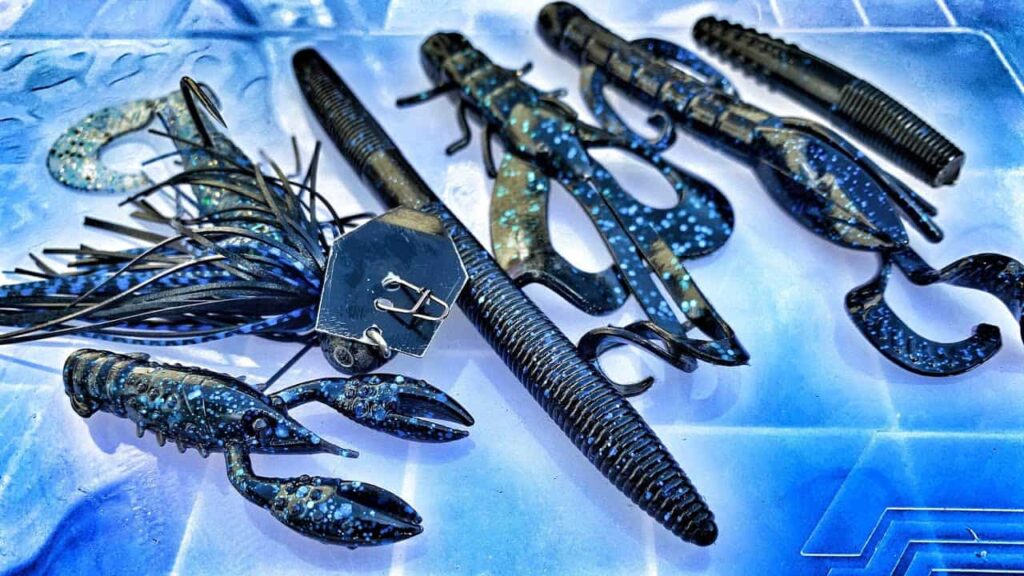
Every experienced angler swears by the color black and blue.
But is it really worth the hype? And when should you use black and blue lures?
This article will give you everything you need to know about how, why, when, and where to fish black and blue lures.
What Makes Black and Blue So Good?
The key to the black and blue color pattern is visibility. Because of the dark color, black and blue contrasts the water and creates a very visible silhouette.
This allows fish to be able to see the lure even in very low visibility water conditions.
Black and blue is not exactly “natural”, but it also isn’t super bright and threatening to fish.
The mix of visibility and subtlety is what makes black and blue so effective for catching bass.
When to Use Black and Blue Lures
Muddy Water
As you already know, muddy water has very low visibility.
You might be thinking that you need really bright colors that reflect a lot of light and shine through the murky water.
But, black and blue is actually even more visible that bright colors in muddy water.
Black is essentially the absence of color.
This absence of color creates a very noticeable silhouette that contrasts the brown or green color of the muddy water.
Overcast Cloudy Days
Even if the lake you are fishing has crystal clear water, if there is little to no sunlight, the water will still have low visibility.
Bass need sun light to be able to see through the water. But if it is an overcast day, there is very little light entering the water.
Even gin clear lakes can have visibility below 2 feet on a really cloudy day.
Especially if there is a lot of wind which often comes with clouds. The wind will make the water choppy and reduce visibility.
The clear contrast and silhouette that black and blue lures create against this water stands out and is very visible.
Also Read: Best Color Lures for Cloudy Days
Deep Water
This is the same idea as overcast days. Fish need light to see, and the deeper the water is, the less light reaches it.
Again, even in clear lakes, sunlight can only get reach so far down. Black and blue still creates a visible silhouette in the deep, dark water.
I consider water above 15 feet as deep. If the lake is abnormally clear, then 20+ is deep.
Bright colors won’t do very well in deep water because they work by reflecting light off them.
And if there is very little light to reflect, they can’t do their job.
Small Ponds
There are two reasons that black and blue colors work well in ponds.
First, small ponds tend to be fairly muddy. Rain and storms muddy up ponds more because there is less water for the dirt and debris to spread into.
The second reason is less logical and more something that I have learned from experience.
That is that for some reason, black and blue just works great for pond bass. It is as simple as that.
I can’t explain to you why, but even in clearer water ponds, black and blue catches tons of bass.
Especially when you are fishing black and blue lures on the bottom like a jig or Texas rig.
Rivers and Moving Water
Moving water from rivers, streams, inlets, or other sources stir up the bottom and strip dirt off the bank.
This circulates and mixes dirt and debris into the water making it murky.
There are calm parts on every river that have clearer water, but the majority of river systems will be murky.
Additionally, river fish are more opportunistic than still water fish.
Because their prey might be passing by them quickly in a current, they are less picky and more reactive.
Fish don’t have as much time to inspect and track down prey. If they don’t attack in an instant, the current will carry their prey passed them.
Black and blue doesn’t exactly mimic any specific prey, but they can easily see it and don’t have time to think twice about eating it.
Best Black and Blue Colored Lures
Although black/blue is one of the best lure colors you can use, I don’t use it on every lure I throw.
There are actually only a few specific lures that I will use in a black/blue color pattern.
As a rule of thumb, the lower you go in the water column, the better black/blue is going to work.
Texas Rigged Creature Bait

Hopping a Texas rig on the bottom is a top tier fishing method. And black and blue really shines on the bottom.
When fishing a black and blue Texas rig, I will always pick up a creature bait. Creature baits have more action and size than other soft plastics.
Things like a Zoom Brush Hog, Havoc Pit Boss, or other crawfish style soft plastics work tremendously with a black and blue Texas presentation.
Jig

I am sure you knew this one was coming. Everyone has seen the black and blue jig slay bass all around the country.
My ideal scenario for this setup is when fishing structure in low visibility water.
Flipping to docks, lay downs, lily pads, artificial structure, or any other cover that holds bass.
All the conditions I mentioned above in the article will create low visibility water.
So if you can find structure in those conditions, flip a black and blue jig to it. I promise you will have tons of success.
Chatterbait

Chatterbaits are a lure for aggressive bass. And black and blue is a highly visible color.
They are the perfect combo. My ideal scenario for throwing a black and blue chatterbait is stained to muddy water when bass are very aggressive.
Pre-spawn, fall, and before a cold front or storm are the best times to throw this setup.
Tube Bait

I really only use tubes when fishing for smallmouth. A black and blue tube works wonders for catching river smallies.
The flowing water causes the squid like appendages to pulse and sway. The action is irresistible for smallmouth bass.
I focus on the moving water sections of the river because of the low visibility the current creates.
But a black and blue tube will still catch smallmouths in calm river sections and even largemouth bass in ponds.
Also Read: How to Rig a Tube Bait Weedless
Reeling this In
Black and blue is one of the best lure colors to throw. It shines in low visibility water because of how it contrasts the water.
But it is also natural and nonthreatening enough to get bites in all water clarities. Black and blue is sort of a master of none.
It doesn’t exactly mimic anything specific, but it slightly mimics everything out there.

